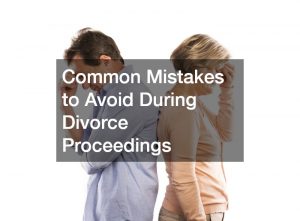Accidents happen in the workplace a lot. Around the globe, 340 million workplace accidents happen every year. Meanwhile, around 2.3 million people, unfortunately, don’t survive workplace accidents and illnesses.
Most Common Workplace Accidents

Many accidents may occur in the workplace. Some of the most common are as follows:
- Slips and falls – A person can slip and fall while working in the office or out on the field. In 2019, the rate of injury due to slipping, tripping, and falling was 23.9 for every 10,000 full-time workers.
- Falls from heights – This is also a common accident, though it’s more prevalent in some industries. For example, people working in warehouses and grocery stores are more likely to fall down from a certain height. They usually climb ladders to move inventory around, which makes them more at risk.
- Contact injury – Workers who use heavy equipment are at risk of contact injuries while operating heavy machinery. Contact injuries also include getting hit by a moving object within work premises, getting caught or crushed in a collapsing structure, and so on.
- Traffic accidents – Workplace accidents don’t just include incidents that happen within the four walls of an office. Work-related vehicle accidents also occur. The risk is higher for people working in the transportation, warehousing, and automotive industries.
This list isn’t exhaustive, but it shows a glimpse of the risks that employees face every day in their workplace.
Legal Ramifications
If an employee gets injured at work, they can file a lawsuit against their employer. And this can lead to a formal investigation of the business. A lawsuit is likely to happen if the employer didn’t take the necessary measures to help the affected employee.
If an employee gets into an accident within the workplace, a manager or someone higher up should call for medical help immediately. If the employee refuses medical help, the employer should document it through a form signed by the employee or their supervisor. This document will deter accusations that the employer didn’t do their part to help the affected employee.
An accident that occurred outside the premises may be difficult to respond to immediately. The employee might also not immediately notify their employer of the accident. For example, say an employee gets involved in a head-to-head collision while driving for work, they might call their insurance agent first and car accident lawyer for assistance.
Nonetheless, if the employer becomes aware of the situation, they should provide help to the employee. The employer should also provide worker’s compensation if the employee files a claim.
Ways to Ensure Occupational Safety

But to avoid the legal headache that a workplace accident might bring, businesses must actively ensure the safety of their employees. Here are some tips:
1. Provide Training
Employers should require employees to undergo comprehensive training on workplace safety. This training needs to include safety precautions that employees must observe while at work. Employees handling heavy equipment should also receive proper training on how to properly use machines to prevent accidents and injuries.
2. Keep Premises Clean and Organized
Some accidents are more likely to occur due to a messy environment. Thus, employers should schedule regular cleaning and organizing in their workplace. Floors should stay clean and dry. Wires should not be exposed so that employees won’t trip on them. If boxes are stacked inside the workplace, they should be stacked properly and secured to prevent them from falling.
3. Encourage Regular Breaks
When employees are exhausted, their risk of getting injured increases. For example, exhaustion can cause blurry vision. Exhaustion also causes a slower response. Employees might not immediately see things on the floor and end up tripping. Thus, supervisors need to encourage employees to take breaks instead of skipping them to prevent workplace accidents.
4. Seek Advice from a Security Consultant
Employers should talk to security consultants to help them improve the safety measures in the workplace. These consultants can also help them find areas for improvement and other issues that need to be addressed to prevent workplace accidents from occurring.
5. Follow Government Regulations
The Occupational Safety and Health Administration implements regulations that businesses must follow to reduce their employees’ risk of occupational hazards.
Also, since the COVID-19 pandemic is still not over, businesses must implement safety precautions to prevent employees from contracting the disease. Some precautions may include installing automatic hand sanitizer dispensers in common areas, requiring employees to wear masks at all times, improving the office’s ventilation, and so on.
Businesses must strictly enforce workplace safety. When employees feel safe at work, they are more likely to perform well.






